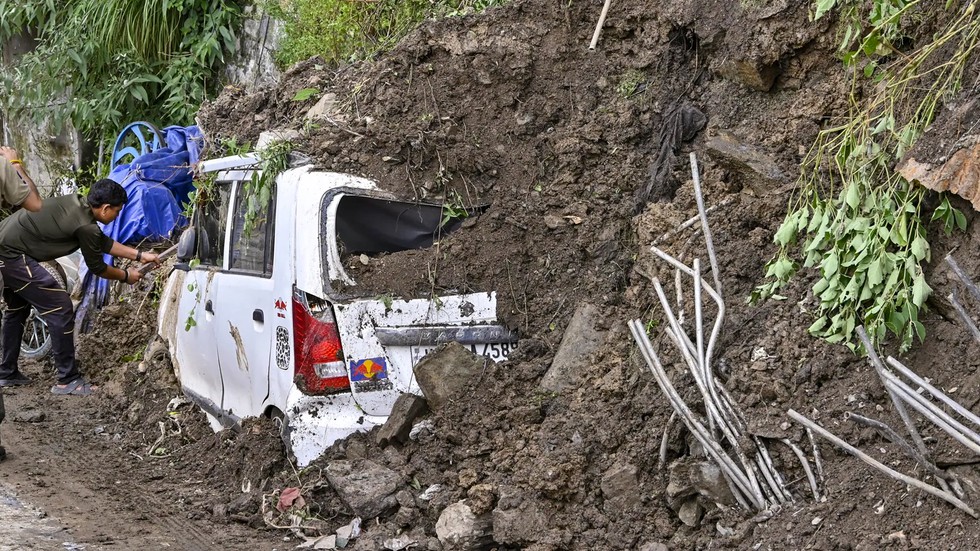
Cloudburst

24.04.2025
Cloudburst
|
For Prelims: What is a Cloudburst?What is a Flash Flood? |
Why in the news? Recently, the Ramban district of Jammu and Kashmir witnessed torrential rainfall and hail, resulting in severe damage.
Key Point:
- The India Meteorological Department (IMD) reported 9 mm of rainfall in 24 hours, marking a 575% increase from the normal 2.5 mm.
What is a Cloudburst?
- A cloudburst is a localised and extremely intense rainfall event, defined by rainfall of 10 cm or more within one hour over an area of approximately 10 km × 10 km.
- Even 5 cm of rain in 30 minutes over the same area qualifies as a cloudburst.
- Cloudbursts are more common in mountainous regions due to a process known as orographic lift. In this phenomenon:
- Warm air ascends the mountain slope and expands due to lower atmospheric pressure at higher altitudes.
- As it expands and cools, the air releases its moisture in the form of precipitation.
- When large volumes of warm, moist air keep rising and accumulating moisture without releasing it, it can lead to a sudden, violent downpour.
- Because of their localised nature, cloudbursts are difficult to forecast and can overwhelm drainage systems, resulting in flash floods and landslides.
What is a Flash Flood?
- A flash flood is a sudden and rapid inundation that occurs when excessive rainwater enters streams, drains, or rivers, often overwhelming the natural or built drainage capacity.
- These are more frequent in mountainous regions where the rocky terrain absorbs little water, causing more surface runoff.
- Unlike riverine floods in plains that cause long-term property damage, flash floods tend to be more deadly, often catching people off guard and leading to loss of life.
Source: Indian Express
With reference to the Cloudburst, consider the following statements:
1. A cloudburst is a localised and extremely intense rainfall event.
2. It is defined by rainfall of 10 cm or more within one hour over an area of approximately 10 km × 10 km.
3.Cloudbursts are more common in mountainous regions due to a process known as leeward side or rain shadow formation.
How many of the statements given above are correct?
A.Only one
B.Only two
C.All three
D.None
Answer B